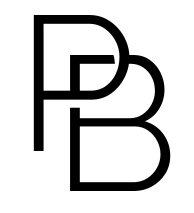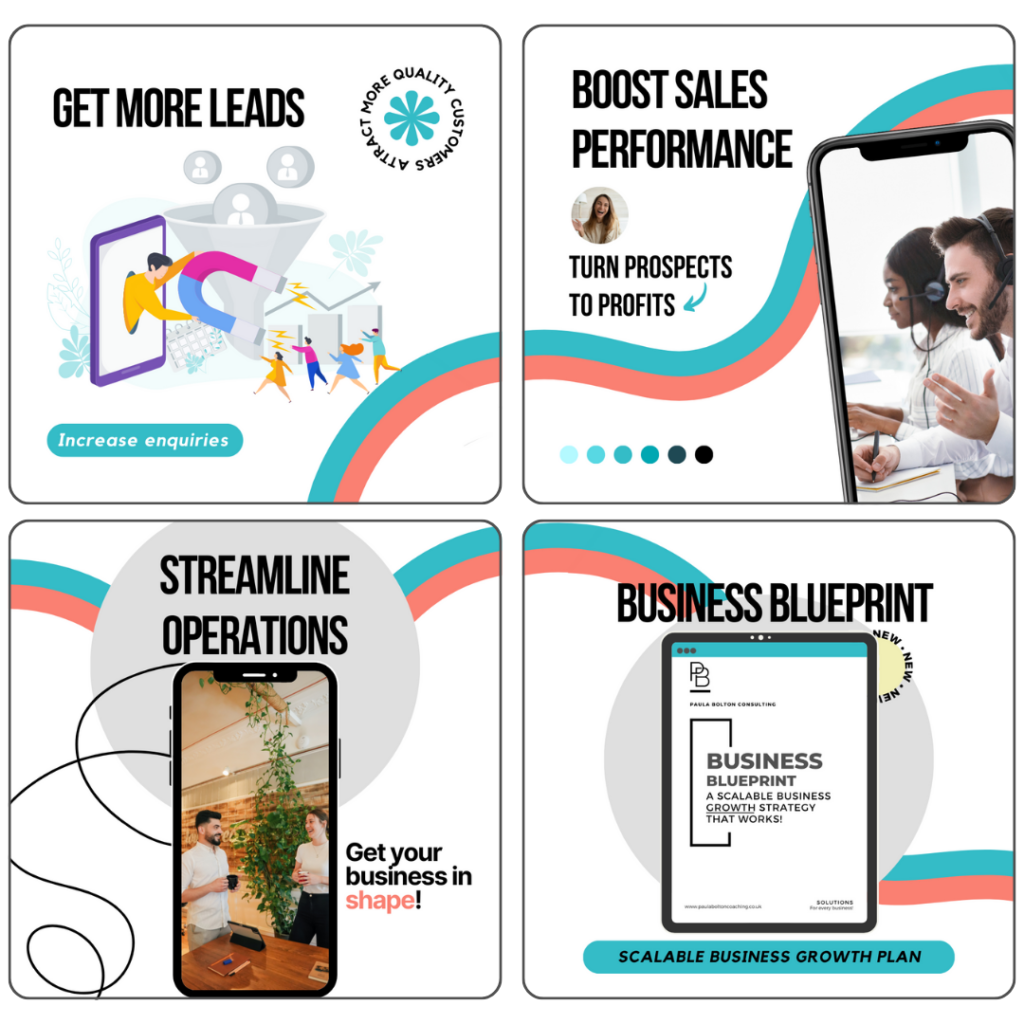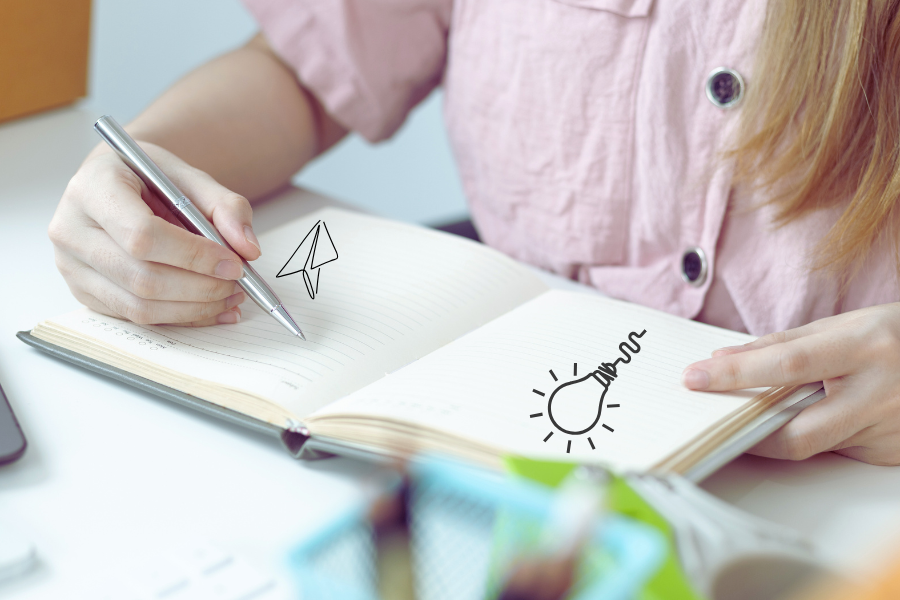Understanding psychology in marketing can transform a standard strategy into an exceptional one.
It’s not just about being on the right platforms; it’s about knowing what prompts users to pause, engage, and convert.
By leveraging the up and coming 2025 marketing trends, you can craft approaches that resonate with your audience, boost conversions and drive significant results.
The power of visuals: borrowing from the Golden Ratio
Good design doesn’t just capture attention; it influences how people feel and react. The difference between a casual glance and meaningful interaction often lies in whether your visuals resonate emotionally.
Applying the Golden Ratio, (think da Vinci’s Vitruvian Man), a design standard rooted in balance and proportion, has been used for centuries to create harmony in art and nature.
Applying it in your marketing creatives can guide viewers’ eyes and build subconscious trust.
Why this matters: Every day, people are inundated with options.
They doom scroll, skim, and stop only when something truly connects.
Applying the Golden Ratio or a similar design framework helps create balance and flow that naturally attracts attention without viewers even realising why.
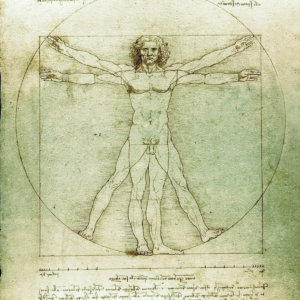
Visuals that hold attention
➡️ Whitespace as a tool: Don’t fill every corner. Allow your content room to breathe. Whitespace draws attention to key elements, enhances readability, and provides a calming visual experience.
➡️ Strategic visual hierarchy: Design your content like a story – start strong with a compelling headline, follow with a striking image, and lead the user’s eye toward a clear CTA. Or consider “The Hero’s Journey” ~ used in most epic movies…
➡️ Balanced asymmetry: Perfect symmetry can be predictable; a balanced asymmetry adds interest and relatability. Think of it as a conversation that keeps people engaged.
➡️ Commanding contrast: Use contrast to spotlight your call to actions. Let them stand out, but don’t overwhelm. The strength of contrast is most effective when used thoughtfully.
➡️ Power of people: A study published in Frontiers in Psychology found that banner ads featuring faces with averted gaze not only drew more attention but also improved recall of the advertising message and brand details.
💡 Takeaway: Designing with purpose, not just aesthetics, can turn casual interest into lasting engagement.
Emotion in colour: hues that resonate
Colours influence decisions and evoke emotions.
Think of a bold red sale banner– it doesn’t just convey information; it incites urgency. This is deeply rooted in colour psychology.
The science: Studies show that 90% of quick product decisions relate to colour (Source: Institute of Colour Research).
Blue often builds trust, used by tech brands for its association with stability, while start-ups favour orange or green for their energetic and growth-centric impressions.
Case study: SAP BusinessObjects saw a 32% boost in conversions after changing a small blue “Add to Cart” link into a prominent orange button. (Neil Patel)
💡 Takeaway: Don’t just pick colours because they look good. Choose colours that evoke the right emotions for your brand message and goals.
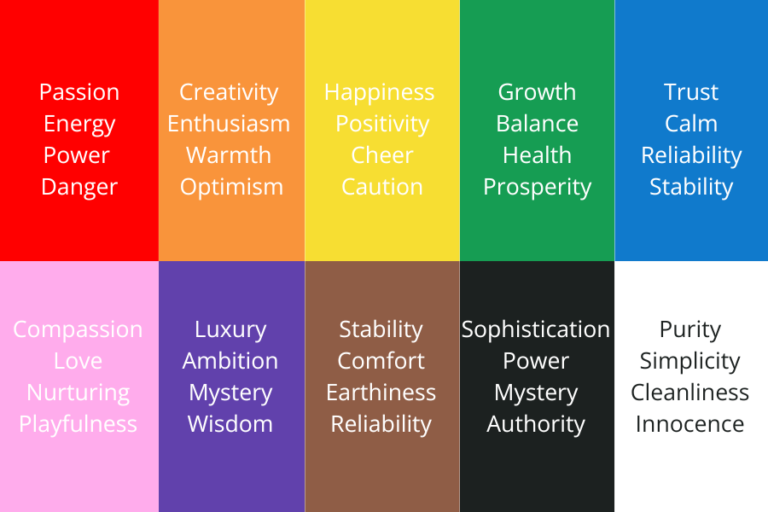
The language of connection: writing for conversions
Words are powerful tools that can either build a bridge or create distance.
The way you present your message can make all the difference.
Enter choice architecture which is a strategic approach that shapes decision-making.
In 2025 and beyond, consumers value authenticity. Brands that communicate in clear, compelling, and honest language will win.
The psychology of words: Loss aversion is a strong motivator.
People prefer avoiding loss over achieving gains. For instance, a headline like “Don’t Miss Out on These Limited Features” often performs better than “Sign Up for Our New Features” because it triggers the brain’s fear of missing out (FOMO). 😱
ActiveCampaign has demonstrated how structuring messages around potential loss can drive higher engagement, especially in email marketing.
Abandoned cart emails that highlight what shoppers might lose (e.g., “Your favourite item is almost gone!”) can nudge customers toward completing their purchase.
Leveraging NLP language preferences: Understanding how people process information can further enhance your messaging.
In Neuro-Linguistic Programming (NLP), individuals have preferred representational systems – Kinaesthetic, Auditory, Logical, and Visual – that shape how they perceive and respond to language.
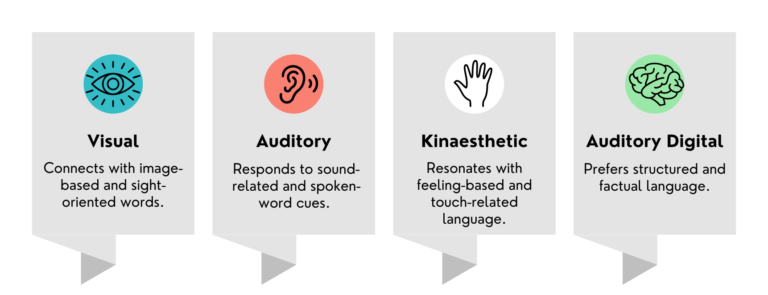
- Kinaesthetic: These individuals resonate with feeling-based and touch-related language. Use words like “experience,” “grasp,” or “hold on to.” For example, “Feel the difference our service can make.”
- Auditory: This group responds to sound-related and spoken-word cues. Use phrases like “hear,” “listen,” or “tune into.” For instance, “Listen to what satisfied customers are saying.”
- Auditory Digital: Analytical thinkers prefer structured and factual language. Phrases like “proven,” “step-by-step,” or “analyse” appeal to them. An example might be, “Analyse how our solution can optimise your workflow.”
- Visual: These individuals connect with image-based and sight-oriented words. Terms such as “see,” “imagine,” or “picture” are effective. For instance, “See the results for yourself.”
By tailoring your language to align with all of these preferences, (not just your own preference), you can craft messages that resonate on a deeper level, ensuring that your audience feels seen and understood.
Language of lurve: ❤️The brilliant Robert Cialdini has recently highlighted the extraordinary persuasive power of love.
According to French research he referenced, even the simple exposure to love symbols can significantly influence and sway decisions.
This shows that language and imagery associated with powerful emotions can deepen a message’s impact and boost its effectiveness.
💡 Takeaway: Infuse emotional language that focuses on urgency, exclusivity, and even love, but make sure it feels genuine.
Combine this with language cues that align with your audience’s NLP preferences – whether that means appealing to their feelings, sounds, logic, or visuals.
Consumers in 2025 are quick to detect insincerity and will engage more with brands that communicate like real people.
Data-driven insights: tracking user behaviour
Measuring user behaviour is key and you can’t manage what you don’t measure.
Marketing trends 2025 underscores the need for tools like heatmaps and A/B testing to refine your strategies.
Case study: A case study involving SAP BusinessObjects demonstrated a significant 32% increase in conversions by changing a small blue “Add to Cart” text link into a prominent orange button. Neil Patel
This change highlights the importance of testing visual elements and calls to action (CTAs) to enhance user engagement and conversion rates.
Insight tools to help you:
- Hotjar and Crazy Egg: Visualise user behaviour to inform content tweaks.
- 2025 trend alert: AI-powered analytics will dominate, offering predictive insights and streamlining the content adjustment process.
Optimising for voice search
As of 2024, around 45% of Americans report using voice search on their smartphones, highlighting its significant adoption in the U.S. (Backlinko).
Globally, about 20.5% of internet users engage in voice search, showing its growing but varied use worldwide (DemandSage).
In the UK, a 2021 survey revealed that 52% of the population had used voice assistants within the past 30 days, indicating strong adoption and continued integration into daily routines (Voxly Digital).
While the exact percentage for 2024 is not specified, this data suggests a notable trend of voice search adoption.
The low-down: Voice searches tend to be longer and more question-based (e.g., “What are the top marketing strategies for my small business this year?”).
Optimising for these natural, long-tail keywords will make your brand feel more approachable and better aligned with user behaviour.
💡Practical steps:
- Optimise for conversational, long-tail keywords.
- Create FAQ sections that answer voice search questions directly.
- Build content that anticipates what users might ask out loud.
Embracing authenticity: Realness builds trust
By 2025, audiences will seek brands that show genuine, human-centric content over curated, flawless images.
But what exactly does authenticity mean, and why do people crave it so deeply?
The answer lies in the growing dissatisfaction with non-authentic content.
Consumers are fed up with overly polished, airbrushed campaigns that feel disconnected from reality. 🙄
Perfectly curated feeds, scripted testimonials, and corporate-speak messaging create a sense of artificiality that fails to resonate. 🥱 #Yawn
Audiences crave authenticity because they want to see brands that reflect their own imperfect, multifaceted lives.
They seek content that is real, relatable, and honest – content that shows vulnerability and behind-the-scenes moments, rather than staged perfection.
Brands that shift away from the overly polished approach and embrace true storytelling will tap into this deep desire for honesty, fostering connections that are both emotional and enduring.

💡 Action steps: Show your human side
To build genuine connections, don’t be afraid to share your story and values.
Post candid videos, (don’t be afraid or ‘judgy’! If you’re bothered about your videos, don’t watch them back – just post!) 😊
You can also showcase team moments, and feature user testimonials that illustrate why your team loves what they do.
This realness can be as simple as an unedited team photo or a story about lessons learned from a business challenge.
Where psychology meets authentic marketing
So the future in marketing is all about creating – on a human level.
Consumers are drawn to brands that recognise them as real individuals with unique needs and desires.
By integrating psychology in marketing and aligning with 2025 marketing trends, you bridge the gap between brand and audience, fostering trust that goes beyond simple transactions.
Brands that stay true to their values and show up authentically will build lasting loyalty.
Today’s consumers want to know not just what you do, but why you do it.
By embracing marketing psychology and focusing on design for conversions, your marketing can do more than capture attention – it can build long-term relationships.
